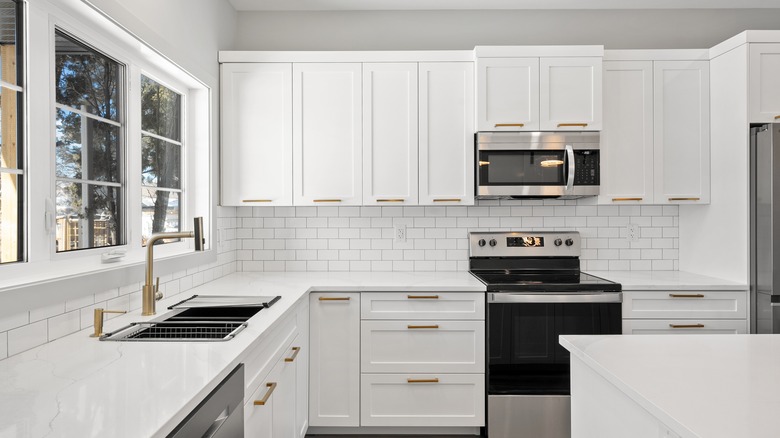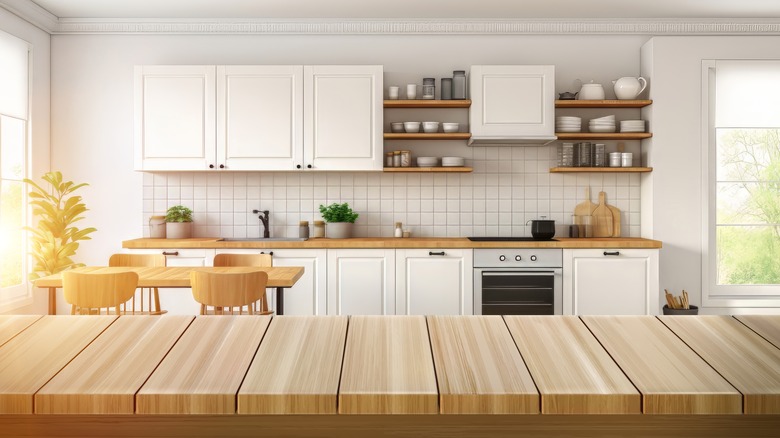Why There's Gap Above Your Kitchen Cabinets
I'm someone who loves HGTV and interior design, yet I've never thought to question why there's that awkward empty space between the top of the kitchen cabinets and the ceiling. This gap — called the "soffit" or "bulkhead" — is surprisingly common in homes of all kinds. Though it may seem like an odd kitchen design centered around wasted space, that gap actually serves a few practical purposes. First, not all ceilings are the same height. Standard cabinetry typically tops out around 30 to 42 inches tall, but many ceilings are higher than that. Instead of building custom cabinets for every kitchen (which would significantly increase costs), many builders opt to leave a gap for flexibility.
This space also accommodates construction quirks, like slightly uneven ceilings or walls that aren't perfectly square. A gap allows installers to work around these imperfections more easily without the added expense of customized cuts. It also leaves room for things like light fixtures, crown molding, or even HVAC ductwork that might need to run across the top of the cabinets. In short, that annoying little void isn't just poor design; it's actually a cost-effective, sensible choice built into many homes, especially those with mass-produced or semi-custom cabinetry.
When the gap becomes a design opportunity
What may start out as a random empty space that takes away from the decor can actually be transformed into a design element. You might be surprised by how that gap has become more of a blank canvas for creative homeowners. Instead of seeing it as a flaw, people are increasingly using it as an opportunity to enhance the look and feel of their kitchens, especially if you're trying to optimize the space. Some install crown molding to close the visual space and create a finished, seamless appearance between the cabinets and ceiling. Others take the opposite approach and turn it into a decorative shelf to showcase cookbooks, plants, or vintage dishware.
In older homes, especially those with taller ceilings, these gaps were sometimes intentionally left open to make rooms feel less cramped. Today, modern design trends are split. Some favor sleek, full-height cabinets that reach the ceiling, while others embrace the airy feeling that a small gap provides. Full-height cabinets are a popular option in high-end remodels, as they provide extra storage and create a clean, built-in look. They're also more expensive.
Retrofitting existing cabinets with extensions or filler panels is possible, but it can involve a fair amount of labor and cost. On the flip side, leaving the gap open can have drawbacks. Dust and grease from cooking can collect up there, requiring cleaning. If the space isn't used creatively, it can also make the room feel unfinished. The decision often depends on the style of your home and your storage needs. Either way, the gap doesn't have to be a liability.

